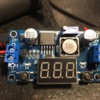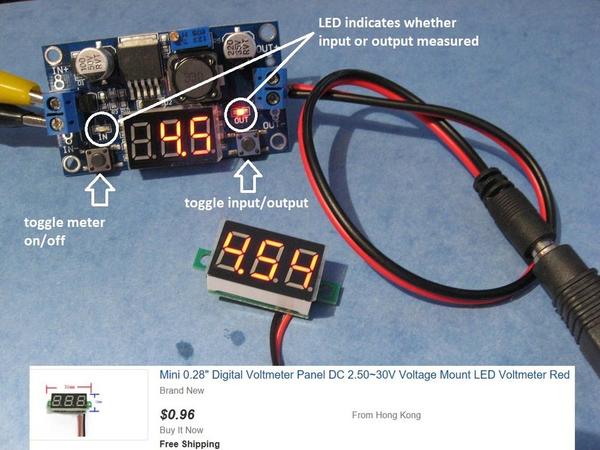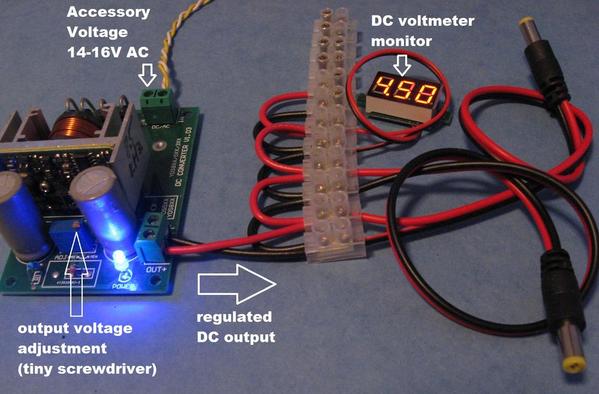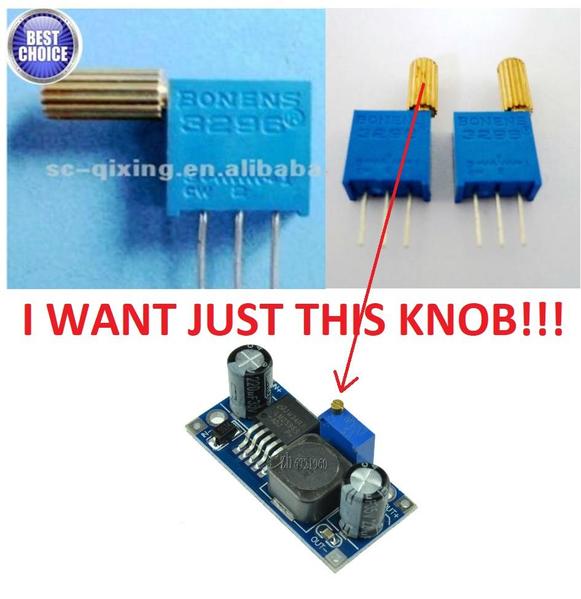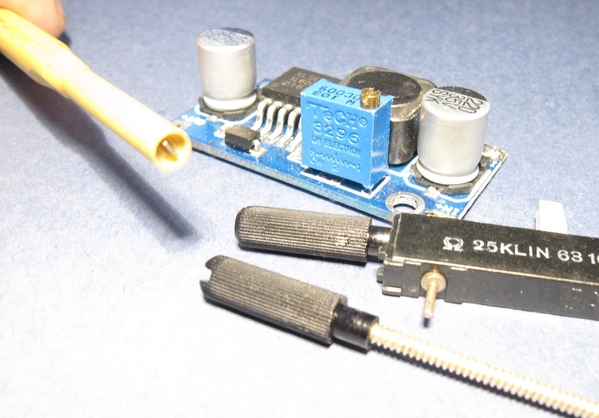I can desolder those and solder in new much large capacitors -- this is the suggestion?
Much easier to add the additional capacitor(s) to the DC-input terminals - leaving the existing capacitors in place. The new capacitor(s) will simply add to whatever is already on the board. I'm just answering your original question at face-value.
If you're asking my suggestion as to what I would do, I'd want to know exactly what you're trying to do with actual voltage ranges, actual motor power requirements, how you adjust/set speed, etc. For example you have that tiny screwdriver adjustment on the DC-DC regulator module that sets the output voltage. Does this mean you are going to set the voltage one-time and never touch it again?
Virtually all DC-motor control today - including within our O-gauge engines - is done using a so-called PWM or pulse-width-modulation electronics. It is a similar digital-like technology as used in the buck DC-DC regulator module. It would be effectively redundant to use the buck module to generate a constant-voltage DC ... and then follow that with a PWM module to further alter the DC to control motor speed. I'm not saying the following module would work for your specific application but gives you an idea of what a PWM controller module looks like. This one happens to operate up to 5 Amps over a reasonably DC large voltage range. Very economical. PWM controllers come in all shapes and sizes.

If powered from AC track voltage, you'd still need the (bridge) rectifier to convert AC to DC. You'd still need large capacitor(s) to smooth out the DC.
Separately, is this on a piece of rolling-stock such that you need to power this from AC track voltage? If this is a layout accessory I'd suggest using a DC-output wall-wart, surplus computer-power supply, etc. to provide smooth DC voltage (12V, 18V, whatever). 5 Amp, 10 Amp, 20 Amp, etc. DC-output supplies cost a fraction of similar AC-output supplies (like train transformers). You could then use this DC-output supply to power the original DC buck converter or a PWM motor speed controller module...no rectifier or additional capacitors.

 I have 4 DC to DC buck converters. The first one works fine on a Menards Building. The rest only read the input voltage on the display, even though the output is at the right 4.5 VDC. Here is the response I got from the supplier:
I have 4 DC to DC buck converters. The first one works fine on a Menards Building. The rest only read the input voltage on the display, even though the output is at the right 4.5 VDC. Here is the response I got from the supplier:




